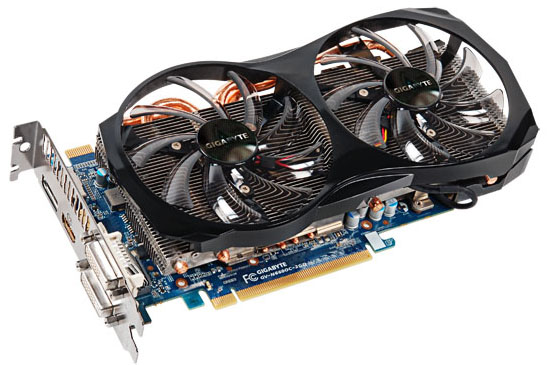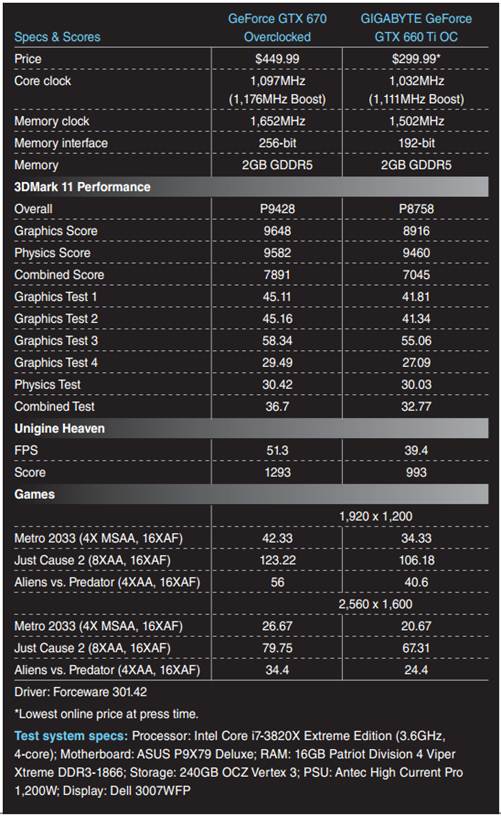Price: $299.99
Website: www.gigabyte.us
After what seemed like ages without much of
anything to talk about on the graphics front, GIGABYTE sent us the GeForce GTX
660 Ti OC Version (GV-N66TOC-2GD), the follow-up to the GeForce GTX 670 meant
to bring Kepler’s 28nm gaming genius to a much wider audience. According to
NVIDIA, the 660 Ti is 41% faster on average than the 560 Ti, which launched
back in 2011.

GIGABYTE’s take on this card is a
considerable upgrade from the stock card. GIGABYTE outfitted the card with its
WINDFORCE 2X anti-turbulence inclined-fin cooler, which consists of a thin
translucent black plastic shroud, two 100mm fans, and an aluminum heat-sink
with two copper heat-pipes running the length of the card. This is also the
first graphics card we’ve reviewed from GIGABYTE to feature its new Triangle
Cool technology, which refers to the slope-sided heatsink designed to increase
cooling efficiency and reduce air turbulence. Additionally, this card features
GIGABYTE’s Ultra Durable VGA components, which include a PCB with 2 ounces of
copper, Japanese solid caps, ferrite core chokes, and tier 1 memory modules.
In a pleasantly surprising move, NVIDIA
features seven out of eight SMX (streaming multiprocessor) units fully enabled,
for a total of 1,344 stream processors; that’s the same number as the GTX 670
and just 192 fewer than that of the GTX 680’s GPU. The biggest difference
between the 660 Ti and the 670 is the former GPU is connected to a narrower
192-bit memory controller. The stock card’s core clock has a base frequency of
915MHz and a 980MHz Boost clock. Thanks to the more efficient cooler, GIGABYTE
is able to deliver its card with a 1,032MHz base clock and 1,111MHz Boost
clock. The memory clock remains at the stock 1,502MHz. There’s 2GB of GDDR5 set
aside for frame buffering. Like the 670, the 660 Ti has 112 texture units, but
24 ROPs, eight fewer than its bigger sibling.

GIGABYTE recommends you have a 450-watt
power supply or better, capable of supplying two 6-pin PCI-E power connectors.
According to NVIDIA, the GeForce GTX 660 Ti has a TDP of 150 watts. This
dual-slot card features a pair of DVI ports, a full-sized HDMI port, and a
Display-Port on the back panel.
In the benchmarks, GI-GABYTE’s overclocked
660 Ti performed well against the significantly more expensive (and overclocked)
GeForce GTX 670; scoring 8758 in 3DMark 11 compared to the 670’s 9428. Unigine
Heaven seemed to favor the more capable 670 by a margin of about 12 frames per
second, but the race was much tighter in Metro 2033 at 2,560 x 1,600 (6 frames
per second). The fact that this card performs so well against the 670 is a
feat, but we have to give GIGABYTE a ton of credit for significantly upgrading
the 660 Ti and then selling it for the same as the stock-clocked 660 Ti. Bravo.
